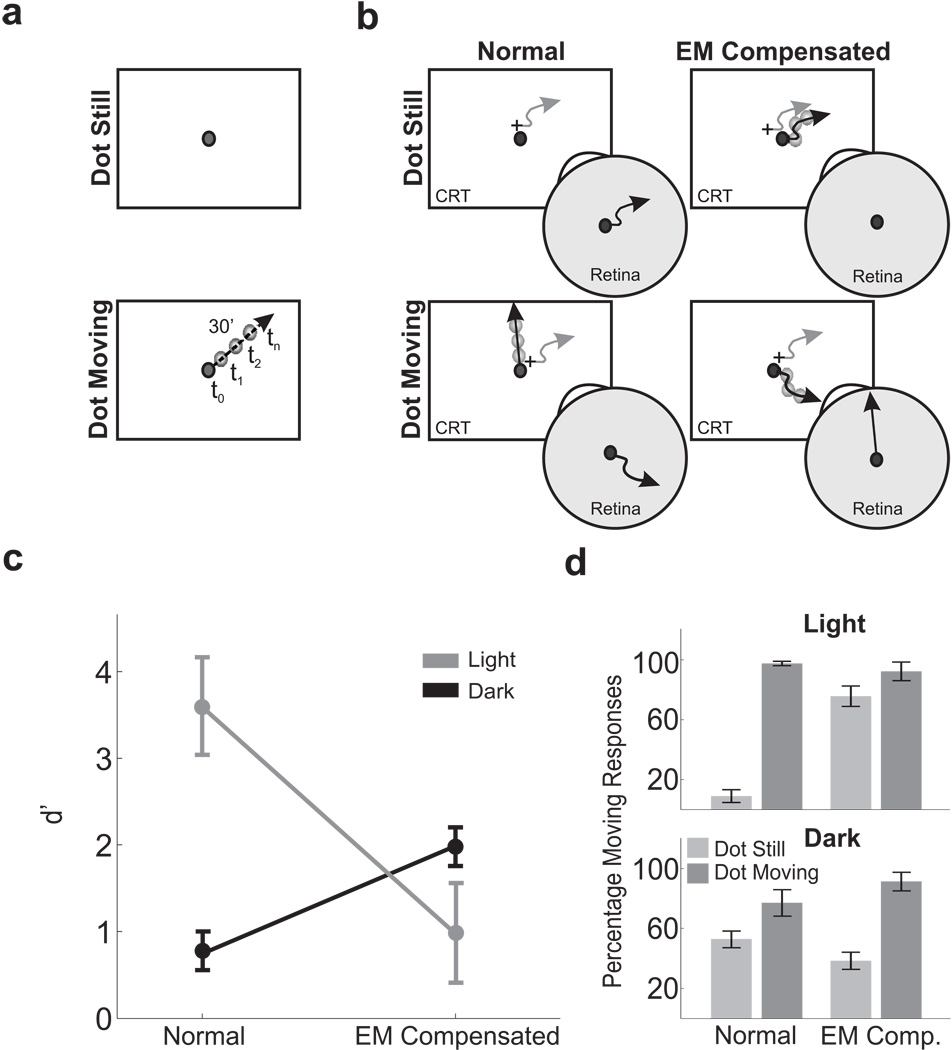Figure 1.
Motion detection with and without the retinal image motion caused by ocular drift. (a) Subjects reported whether a 4’ dot (2 cd/m−2) was stationary or drifted with uniform motion. The dot was displayed for 1 s, and the motion direction varied randomly across trials. (b) In each trial, a dot trajectory with velocity 0’/s (dot still) or 30’/s (dot moving) was realized in either of two coordinate systems: a reference frame fixed with the monitor (Normal) or a reference frame fixed with the retina (EM Compensated). In this latter condition, the stimulus was actively translated on the screen under real-time computer control to compensate for the subject’s eye movements (gray lines) so that it either remained immobile in the fovea or followed a linear path on the retina. (c) Mean discrimination performance (N = 6). Elimination of fixational instability was detrimental under dim illumination (Light) and beneficial in complete darkness (Dark). Error bars represent 95% confidence intervals. (d) Percentages of correct discrimination ± sem in all experimental conditions. In this and the following figures, performance was evaluated over trials that did not contain saccades or microsaccades.

